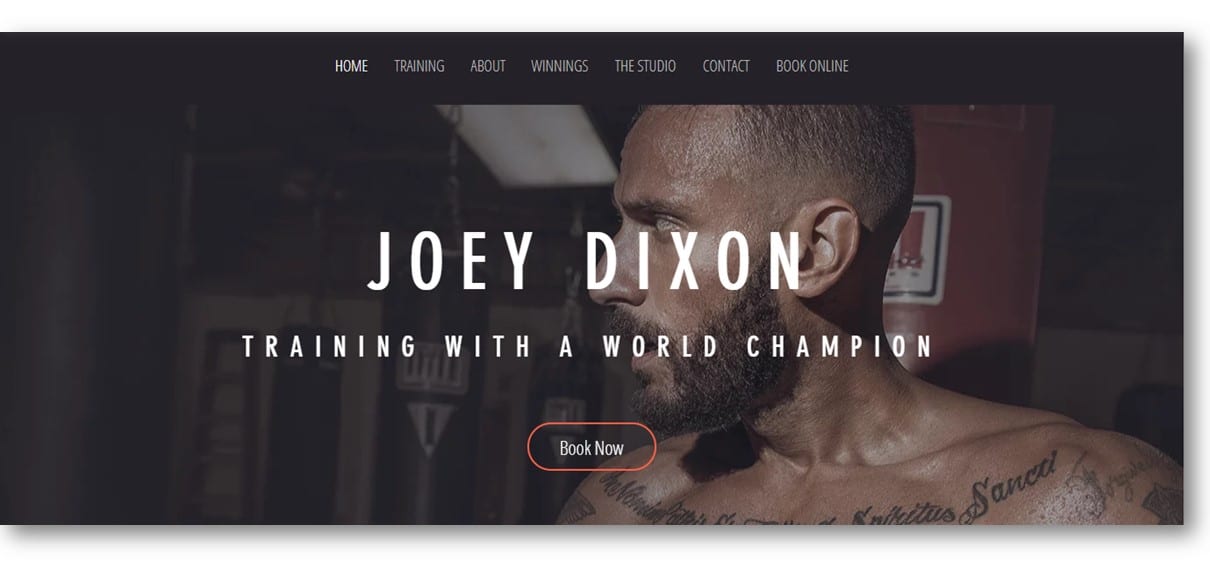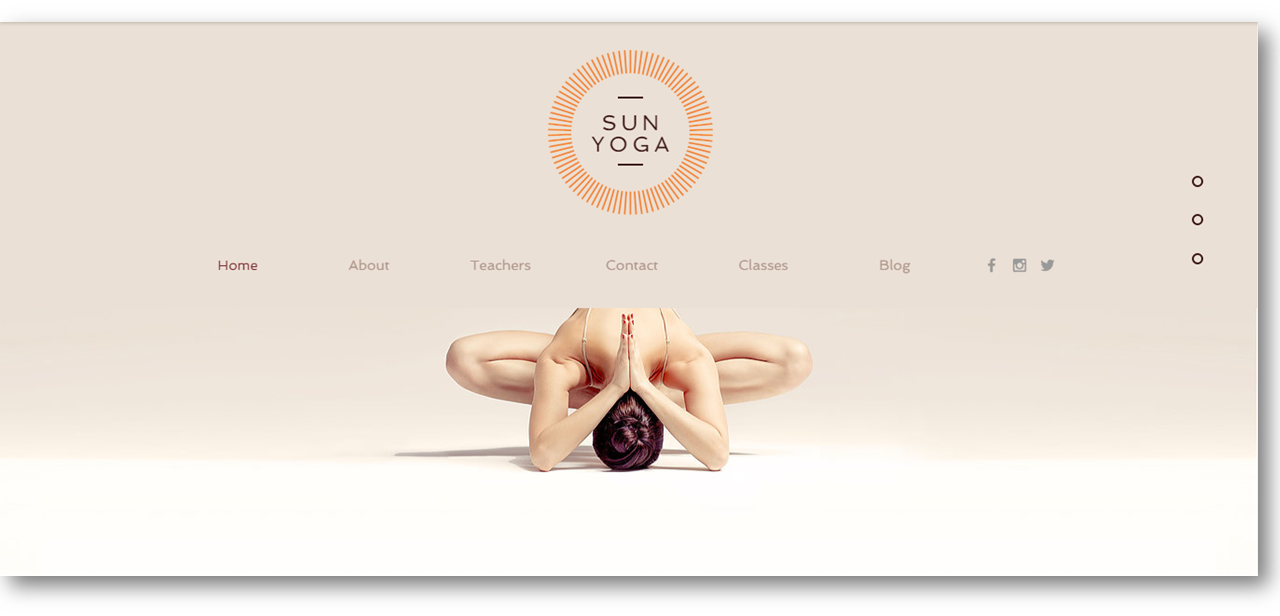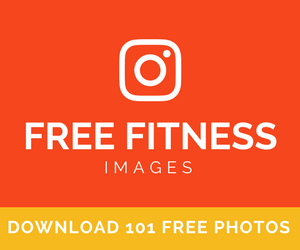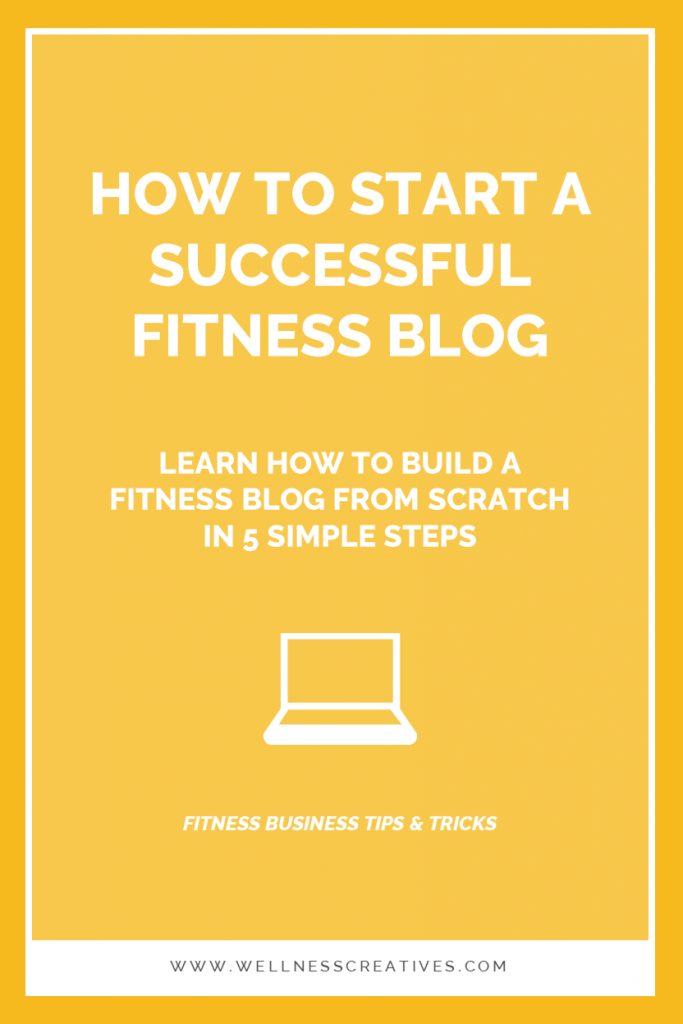How To Start A Fitness Blog No Knowledge
Interested in learning how to start a fitness blog but not sure where to begin? Starting a blog can be a great way to promote your business, help others on their wellness journey, and establish yourself as a credible industry expert. It can even create an impressive income stream.
In this article – we walk you through how to start a successful fitness blog in 5 simple steps.
Building a website may sound a bit technical but it's really quite simple with the right guidance. It's easier than ever for anyone to start a fitness blog, even with zero coding knowledge.
Thanks to DIY website builders you can do it in less than an hour! So, if you're inspired by the likes of Nerd Fitness, Girls Gone Strong, or the Body Coach, this article will show you how to start your own site…
Starting A Fitness Blog – Overview
Here's a quick overview of how to start a fitness blog that gets traffic and visitors…
- Define your blogging goal
- Pick a niche
- Brainstorm fitness blog ideas
- Set up the website
- Create your content
If you're anything like us, then you'll want to dive straight into building your fitness blog. But one crucial lesson we've learned about starting a fitness blog efficiently is…
Planning up-front will save a LOT of time later on.
With our first website, we made the mistake of jumping straight into the creation part, without knowing exactly what we were trying to achieve, or even what we'd be writing about.
This lead to a lot of re-designing and editing down the line, which wasted time and cash. So it's totally worth investing a little time into planning, to save yourself money and hassle later on.
When we first started out, we didn't have a clue how to start a fitness blog (or any kind of website for that matter). We spent weeks figuring out what all the jargon meant and making it look pretty – what is hosting and did we need it? How does WordPress work? Could we set it all up for free?
Over time, we learned exactly how to start a fitness blog the right way, from registering the domain name to writing great articles.
Since then, we've built and launched multiple health and fitness websites. We've condensed the entire process into something that's simple and effective, to save you time and effort.
This DIY guide walks you through exactly how to start a fitness blog in 5 simple steps (and avoid the mistakes that we made). Ready to get started? Then let's jump in…
#1 – Define Your Blogging Goal
 What's your reason for starting a fitness blog? What's your ultimate goal? When starting any new project, it's important tobegin with the end in mind.
What's your reason for starting a fitness blog? What's your ultimate goal? When starting any new project, it's important tobegin with the end in mind.
If you're creating a fitness blog to promote your gym or PT services, then it'll be very different to a website that's intended as a hobby. Here are some common reasons why people start a fitness blog…
- Generate leads for your fitness business or improve SEO
- Create a passive income from online workout programs, ebooks, or affiliate sales
- Support existing clients with extra education or value, that keeps them loyal
- Establish yourself as an authority in your niche and secure public speaking engagements, conference invitations, or master coaching gigs
- Sell physical products online, such as supplements, equipment, or merchandise
- Start a new hobby (it's totally fine to do something just because it brings you joy!)
You may find that you have more than one purpose for creating it and that's fine too. It doesn't matter what the reason is, just write it down so you don't get distracted from your objectives later on.
By having a clear goal, you can ensure that everything on your blog, from the homepage banner to your content, is all directing people towards that end objective.
You might also like… 7 Successful Fitness Blogging Strategies or 15 Ways To Make Money Fitness Blogging.
#2 – Pick A Fitness Niche
Now it's time to think about fitness blog ideas… What exactly will your blog be about? Try to ensure it's about something you love, or you're passionate about sharing. Starting a fitness blog can be fun but make sure it's not something you'll get bored with after a few months.
Niche down as much as you can. What makes you different?
 The fitness niche may seem like a saturated market but everybody has a unique twist that they can put on it. It might be the type of workouts you're interested in, style of healthy cookery, unique approach to stress management, or previous experience that sets you apart.
The fitness niche may seem like a saturated market but everybody has a unique twist that they can put on it. It might be the type of workouts you're interested in, style of healthy cookery, unique approach to stress management, or previous experience that sets you apart.
Niche Fitness Blog Ideas
The secret to starting a successful fitness blog (or any business for that matter) is that you must define your niche. Here are a few different fitness blog ideas to get you started…
- Fitness food blog – share healthy recipes and workouts with a clean eating blog or vegan fitness blog
- Sports-specific fitness blog – create a training blog for triathletes, footballers, or surfers
- Fitness lifestyle blog – combine two passions with a fitness fashion blog
- Your fitness journey blog – record your fitness journey for accountability
- Fitness motivation blog – inspire and motivate people with tips and stories
- Fitness equipment blog – review new products and create equipment-based workouts
If you're starting a fitness blog with the intention of making money, then this stage requires a lot more research. Like any business venture, you need to do a lot of homework to understand how big your potential market it, what exactly they're looking for, and how to meet their needs.
You might also like… Starting a Successful Fitness Business Online or How To Become a Fitness Influencer.
This isn't something you can tick off in half an hour, but Shopify has put together this great guide on how to validate your business idea (and you can do it in an afternoon). But if you're learning how to start a fitness blog for fun or as a hobby, then don't worry about this stuff. Just enjoy the creative process!
#3 – Brainstorm Blog Ideas
This is where the fun really starts. It's the point where you can begin getting creative and putting down all your ideas on paper. This step in starting a fitness blog involves brainstorming… What do you want your blog to feature?
Get a blank piece of paper and open the timer on your phone. We need to spend a few minutes brainstorming all the types of content, topics, and website features you want to include.
To really do this well, you should force yourself to write for the whole 10 minutes. You want to empty all of those fitness blog ideas onto paper. You know, the ones that have been swirling around your brain for the last week, month, or even year. If you get stuck you can use the below prompts, now you've got 10 minutes – GO!
- Broad topics – e.g. cardio, free weights, bodyweight exercises, yoga, cycling, paleo, clean eating, dairy-free, stress, mediation.
- Themes – e.g. 7 minute HIIT workouts, exercises you can do at work, Paleo breakfasts, sugar-free snacks.
- Content Ideas – e.g. how to do the perfect squat video, 3 ingredient protein bar recipes, meditation fact vs fiction infographic.
- Cool functionalities – e.g. homepage slider, animations, calorie calculator, downloadable programs.
- Design – e.g. minimalist style, colour ideas, cool fonts, other website designs you like, layout ideas.
Once the 10 minutes is up, review your ideas and cross out any bad ones, or things that just don't fit in with the others. Then categorise your fitness blog ideas under 2-4 high-level headings, such as 'workouts' or 'recipes'. These will be your menu categories when you come to build your site.
Now prioritise the menu categories, sub-topics and article ideas. As a minimum, you'll need a home page, an about page with contact info, and one article to launch your site with. We recommend having a couple more (say one article per menu category) when you launch, but you don't need more than that to get started.
Top tip ⇒ if you have fewer than 50 article ideas, then go back and do another 10-minute brainstorm. If you can't come up with 50 ideas after that, then you may need to rethink your blog's niche theme…
#4 – Set Up The Site
Now that you've got your blog concept outlined, you can begin to actually build the website. Job number one is to secure a domain name and hosting.
We may earn a commission if you click some of the links below but this isn't why we included them. We've used all the services ourselves and know first-hand that they offer the best value and are easy to use.
The domain name is what people will type in to visit your website (e.g. www.wellnesscreatives.com). The hosting is where your site data is stored and managed. Both the domain and hosting are usually arranged through the same company – the most popular being Bluehost and Wix.
⇒ Not sure what to call your blog? Read this article on Awesome Fitness Blog Name Ideas.
Fitness Blog Hosting
The quick and easy starter option is Wix. They make it super-simple to create a beautiful blog with zero technical know-how.
Wix offers stunning fitness-themed templates, allowing you to promote your services, take online bookings, and accept payments. It's free for a basic website, but if you want a custom domain name (which is a must-have for a professional website) then you can pay to upgrade from $4+ p/m.
If you need a more customisable or professional website, then you'll need to buy hosting from Bluehost and install WordPress. They offer reliable services at great pricing ($3.95 p/m) with much more freedom to tailor your blog than Wix. Installing WordPress enables you to customise your website in an awesome number of ways.
This is another reason that planning is an important part of how to start a fitness blog… You don't want to build your website on Wix, only to find that it can't support that cool BMI calculator you hoped to include. So go with the option that matches your long-term needs and avoid the trauma of a website move down the line.
Here's a short video on how to start a fitness blog with Bluehost and WordPress…
Top tip ⇒ Once you've secured your domain and hosting, create an email address. A hello@mybusiness.com address looks a lot more professional than anything@gmail.com (and you can always link them if you really like Gmail's add-ons).
Fitness Blog Design Templates
The next part of setting up your fitness blog is to pick a design template. Your blog design will be controlled by two things: your website template and the images you add to it.
 The template controls the overall layout of the site, from where the header menus are located, to whether there's a slider on the homepage. It's like an outline structure that you insert your content into, similar to painting by numbers.
The template controls the overall layout of the site, from where the header menus are located, to whether there's a slider on the homepage. It's like an outline structure that you insert your content into, similar to painting by numbers.
If you want your overall painting to look good in the end, then you'll need to paint the right colours in the right sections. But if you start with the wrong picture outline (template), then no amount of paint (content) is going to make it look how you want.
If you're using Wix, then there are a number of built-in templates that are fitness-themed and look super-professional…




If you're using Bluehost combined with WordPress, then there are THOUSANDS of design templates you can install. We especially like templates by Dessign.net since they're a bit more stylish than most, plus their customer support is outstanding. Creative Market and Theme Forest have a lot of good options too.



#5 – Create Your Content
The last step in creating a fitness blog is content development. Remember all those content ideas you prioritised in step #3? Well, now it's time to create them!
Open up Microsoft Word, Google Docs, or Evernote and start writing. We find it useful to plan out our articles first, by brainstorming the key points we want to make and any research we'll need to do beforehand. But some people just prefer to get stuck in 'free-writing' style, so go with whatever works for you.
In the beginning, it's important to post insanely valuable content. The kind of posts that people will bookmark and save to come back to. Think practical guides on how to achieve a specific goal or posts that answer frequently asked questions.
But it's also important to let your readers get to know you. Share a bit of your brand personality so they understand why to follow you instead of another fitness blogger. If your blog is part of your business website, then use it to give insights into behind-the-scenes snippets.
Here are some fitness blog post ideas to get you started and help establish your brand…
Why I Created [BLOG NAME]
This is a chance to tell your origin story… why does your business exist? What need does it serve and who is it aimed at? Did you notice a gap in the market, or develop your business to meet a need you'd experienced yourself?
What Is [BLOG NAME]?
Talk about what inspired your business name, the products or services you offer, and the type of people who will benefit from them.
The 3 Values I Live By
Describe the core values that are important to you, and how they are reflected in your style of personal training/yoga/nutrition.
3 Values At The Core Of [BLOG NAME]
If your brand is a business rather than yourself, then outline its central values and how this impacts the way it operates.
Introducing The [BLOG NAME] Dream Team
Write a short biography of your key team members, so that clients feel a personal connection from the outset. Include details of their background and experience, but keep it light with fun facts too.
Why I Became A Personal Trainer/Gym Owner/Yoga Instructor
Describe the story behind what motivated you to get into this industry. Why do you do what you do every day? People love to know what inspires others.
How I Became A Personal Trainer/Gym Owner/Yoga Instructor
Outline the exact steps you went through, detailing your education and experience. This builds your credibility and positions you as a knowledgeable professional (as well as being interesting for others who are inspired by your career).
5 Reasons That [BLOG NAME] Is Different To [INSERT COMPETITOR]
This is a great way to outline how your business is different and better than the competition. It also works well for alternative substitutes such as personal training .vs. fitness apps.
Why We Love The Little Things
Talk about the small details that you love about your offering. This is a chance to highlight those things that set you apart from the competition. It might be an aspect of the interior design, a complimentary service, or the way you approach your programs.
A Typical Day At [BLOG NAME]
Detail a day in the life of yourself or your business, in 1-2 hour intervals. This allows you to subtly promote services, whilst demonstrating how much effort goes on behind the scenes to ensure your clients have a great experience. Here's a great example by Girls Gone Strong.
Once you've written your first few blog posts, you can find more ideas in these articles…
- How To Write A Fitness Blog Post Your Readers Will Love
- 10 Fitness Blog Post Ideas For Attracting New Clients
- How To Boost Gym Retention & Loyalty With A Blog
But don't limit yourself to written articles only. People like to consume content in different ways, so consider videos, infographics, images, and memes too.
Presenting your content visually is especially important in the fitness niche since people need to be inspired to take action.
- Demonstrate how to perform an exercise using a video or meme.
- Include images to show people the exact steps they should follow to prepare a recipe, and how it should look when finished.
- Use a free tool like Piktochart to create infographics about the health benefits of smoothies.
- Mix up your approach so that your content is easy to digest and appeals to a wide range of people.
You might also like… How To Start a Successful YouTube Channel.
Creating Your Fitness Blog
Log into your website management system and install your chosen theme. Then create the categories from step #3 and your website menu. Now add your written content and you'll start to see your fitness blog take shape.
 Once your content is uploaded, add more images. You'll need an eye-catching image on your homepage and at least one near the top of every article.
Once your content is uploaded, add more images. You'll need an eye-catching image on your homepage and at least one near the top of every article.
Images not only add to the overall aesthetics of your site but encourage people to keep reading by breaking up the text. If you don't have your own images, then there are a few different ways to source them…
A. Take your own photos
Firstly, you can take some photos yourself or ask a friend to do it for you. These photos are great because they'll accurately represent you and your work, which can add a sense of authenticity to your site.
It's important these photos look professional though, so if you're not great at photography or don't have the time, then we have a few other options…
B. Canva
Canva lets you create beautiful website graphics easily. No expensive design software or creative skills needed!
Its simple interface and drag-and-drop features, allow you to design stunning graphics that create a professional personal brand. Canva includes millions of images, icons, and fonts, many of which are completely free. You can also use it to create social media graphics, pricelists, or posters too.
C. Depositphotos
Depositphotos is a great source of professional images and photography, minus the usual cheesy options. There are lots of high-quality photos, icons, and even logo templates to choose from.
It's a lot cheaper than the likes of Getty and iStock too… Pay-as-you-go pricing starts at $39 for 5 images. We think it's worth investing in 3-5 high-quality images to use on your homepage and create a great first impression. Then you can use free Canva images for the rest of your site and blog posts.
Top tip ⇒ Include a way to collect email addresses from website visitors, such as offering a free download. Then you can use email marketing to build a relationship and generate repeat visits. Learn more about fitness email marketing here or get Mailchimp here.
How To Start A Fitness Blog – Summary
These five simple steps outline exactly how to start a fitness blog from scratch. Here's a quick summary overview of the entire process…
- Define your goal – Why do you want to create a fitness blog? What's the ultimate purpose or goal?
- Pick a niche – Differentiate your fitness blog by specialising in something.
- Brainstorm fitness blog ideas – Spend 10 minutes writing down every idea you can think of, from general themes to specific articles.
- Set up the site – Use Wix or Bluehost to get your domain and hosting sorted, then choose a design template.
- Create your content – Work through your prioritised list of ideas from step #3 and add images using your own photos, Canva, or Depositphotos.

Now you know exactly how to start a fitness blog for your gym, personal training business, or online venture. Following these simple steps will ensure you're up and running in no time and with minimal fuss.
For more fitness blogging tips and tricks, check out this promotional checklist and revenue-generating ideas…
Fitness Business Templates & More
Our ready-made templates make it quicker, cheaper, and easier to promote your fitness business. They can improve the effectiveness of your sales and marketing campaigns. If you aren't an experienced marketer, then templates also provide a useful guide for you to follow.
Whether you run a gym club, fitness studio, or personal training business, these templates will save you time and effort. They'll help you to plan and organize your promotional activities so that you generate more revenue. You'll get 40+ templates covering sales, marketing, and business start-up resources.

How To Start A Fitness Blog No Knowledge
Source: https://www.wellnesscreatives.com/how-to-start-a-fitness-blog/
Posted by: jarvisthele1947.blogspot.com

0 Response to "How To Start A Fitness Blog No Knowledge"
Post a Comment